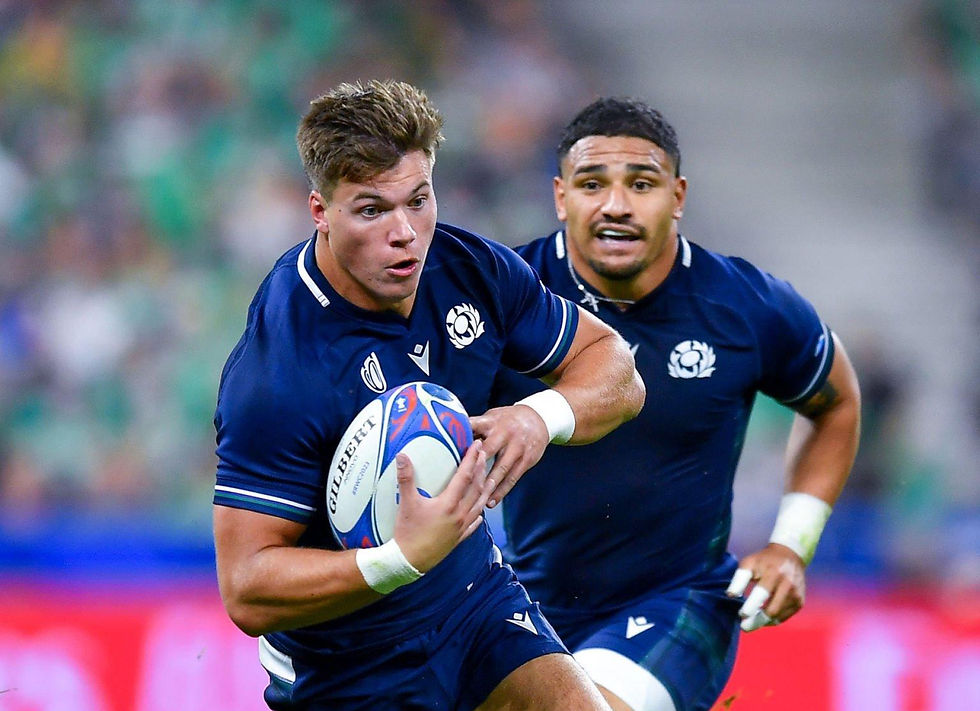Revolutionizing Rehabilitation: Injury Recovery in Modern Sports Medicine
- Dia Upreti

- Oct 26, 2024
- 4 min read
Updated: Oct 26, 2024
Diya Upreti, Jadetimes Staff
Diya Upreti is a Jadetimes news reporter covering Sports News

Revolutionizing Rehabilitation: Injury Recovery in Modern Sports Medicine
In the high-stakes world of professional sports, injury is often an unfortunate reality. What was once a career-ending blow has become, in many cases, a recoverable setback, thanks to advancements in sports medicine. The blend of technology, innovative therapies, and holistic approaches has transformed the rehabilitation landscape for athletes, allowing them to recover faster, stronger, and sometimes even better than before. Here’s a look into how modern sports medicine is revolutionizing the process of injury recovery.
1. The Role of Technology in Recovery
One of the most significant advancements in sports rehabilitation has been the integration of technology. Devices like magnetic resonance imaging (MRI) and ultrasound allow for quick and precise diagnoses, pinpointing the exact location and severity of an injury. 3D motion capture systems help sports therapists understand an athlete’s movement patterns, identifying biomechanical faults that could lead to injury or re-injury.
In recent years, wearable tech has made a remarkable impact as well. Devices that track an athlete's movements, joint angles, and force outputs provide valuable insights into their physical state. The data gathered from wearables enables medical professionals to customize training and rehabilitation programs, ensuring each athlete's needs are met, down to the smallest detail.
2. Accelerated Healing with Regenerative Therapies
Athletes are benefiting from breakthrough regenerative therapies that help accelerate tissue repair and reduce healing time. Platelet-rich plasma (PRP) therapy involves drawing a patient’s own blood, separating the platelets, and then injecting this concentrated plasma into the injured area. The growth factors in PRP promote healing, especially in soft-tissue injuries such as tendon strains.
Another promising technique is stem cell therapy, where stem cells are injected into the damaged tissue to facilitate regeneration. Stem cell therapy has shown incredible results in repairing cartilage, muscle, and ligament injuries, allowing athletes to return to competition faster and with a lower risk of re-injury.
3. Cold Therapy and Cryotherapy
Cold therapy, specifically cryotherapy, is a rapidly growing trend in sports rehabilitation. Whole-body cryotherapy chambers expose athletes to subzero temperatures, which help reduce inflammation, relieve pain, and speed up recovery. Athletes find cryotherapy sessions to be a quick way to manage soreness and rejuvenate muscles, making it a staple in many post-game and post-training routines.
Additionally, contrast baths, alternating between hot and cold water immersion, are used to increase blood flow and reduce swelling in injured muscles and joints. This method, though age-old, has evolved with new technologies and remains highly effective.
4. Physical Therapy: The Core of Recovery
While high-tech treatments often make headlines, physical therapy remains the cornerstone of rehabilitation. Today’s physical therapy sessions often combine traditional strengthening exercises with advanced techniques like neuromuscular training. Through neuromuscular re-education, athletes can retrain their muscles and nervous system to regain full mobility and function.
Another critical aspect of modern physical therapy is functional movement training, which focuses on improving an athlete’s biomechanics and preventing future injuries. This training is often personalized and adapted to an athlete’s specific sport, ensuring they regain strength and movement tailored to their needs.
5. Hydrotherapy: Harnessing the Power of Water
Water-based rehabilitation, or hydrotherapy, has seen a resurgence due to its remarkable benefits. The buoyancy of water reduces stress on joints and muscles, allowing athletes to perform movements they couldn’t do on land. Aquatic treadmills and underwater resistance exercises help athletes rebuild strength and coordination while minimizing the risk of further injury.
Hydrotherapy also offers psychological benefits. Water is naturally soothing, which helps reduce stress and improves mental well-being, a crucial component in injury recovery.
6. Virtual Reality (VR) and Mental Resilience Training
Virtual reality has found a unique place in sports rehabilitation by aiding mental resilience and providing immersive environments for practice. VR helps athletes visualize their sport-specific movements, allowing them to stay mentally engaged while physically recovering. It also facilitates mental resilience training, as athletes use VR simulations to mentally rehearse high-stress situations or challenges they may encounter during competition.
7. Nutrition and Personalized Diet Plans
Recovery isn’t just about therapy and training; it’s also heavily influenced by what goes into an athlete’s body. Sports nutrition has become incredibly specialized, with dietitians crafting tailored recovery diets for athletes, focusing on foods that promote tissue healing, reduce inflammation, and provide essential nutrients. Protein intake, antioxidants, and anti-inflammatory foods are prioritized, and sometimes supplementation, such as collagen or omega-3s, is used to speed up recovery.
8. Mindfulness and Holistic Approaches to Recovery
Injury can take a psychological toll on athletes, and in recent years, mindfulness practices and mental health support have become integral parts of the recovery process. Techniques like guided meditation, yoga, and breathing exercises help athletes cope with the emotional stress of being sidelined. Many sports medicine professionals advocate a holistic approach to rehabilitation, emphasizing mental well-being alongside physical healing.
9. The Future of Injury Recovery in Sports Medicine
The field of sports medicine continues to evolve, with AI-based injury prediction and robot-assisted therapies on the horizon. As technology and research advance, the possibilities for faster, more effective recovery methods are expanding. The ultimate goal of these innovations is to allow athletes to spend less time recovering and more time performing at their best, minimizing the risk of re-injury and extending the longevity of their careers.
Final Thoughts
Modern sports medicine has transformed injury recovery from a daunting, uncertain process into a well-supported, data-driven journey. As athletes adopt these revolutionary therapies and technology, they’re able to come back stronger and more resilient, pushing the boundaries of human performance. For both athletes and sports fans, this progress in rehabilitation means that injuries no longer signal the end—they’re simply a stepping stone to a greater comeback.











































Comments